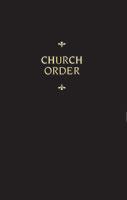
Does unity in doctrine mean unity in practice? How was the Reformation actually put into practice, and what does it mean for us? Chemnitz’s Works, Volume 9 (Church Order), new from Concordia Publishing House, gives the sixteenth-century answers to those questions.
This modern translation of the Church Order by Martin Chemnitz and Jacob Andreae (authors of the Lutheran Formula of Concord) shows not only what those who confessed the Augsburg Confession believed but also how the Lutheran Reformation put that faith into action and handed down the faith by means of orderly worship, church governance, and education. This text is crucial for avoiding misinterpretations of the Lutheran Confessions and the Reformation as a whole.
“On the one hand, this Church Order is the summation of the church orders emanating from Wittenberg that preceded it, both theologically and practically,” says Dr. Robin A. Leaver, general editor, Yale Journal of Music and Religion. “On the other hand, it proved influential on later Lutheranism, not least its music, since it was for the liturgies of this Church Order that Michael Praetorius composed an enormous amount of music that was so influential on subsequent generations and beyond.”
Features of Church Order include the following:
- Snapshots of school and church life in the territorial church led by Chemnitz, a main author of the Formula of Concord (one of the Lutheran statements of faith)
- Ancient worship music and chants set to modern musical notation
- “Luther, the Confessions, and Confessors on Liturgical Freedom and Uniformity” by the Rev. Matthew C. Harrison, president of The Lutheran Church—Missouri Synod
Order Chemnitz’s Works, Volume 9 (Church Order) now at cph.org/churchorder. For more information, contact Lindsey Martie, CPH Public Relations, (314) 268-1303.


